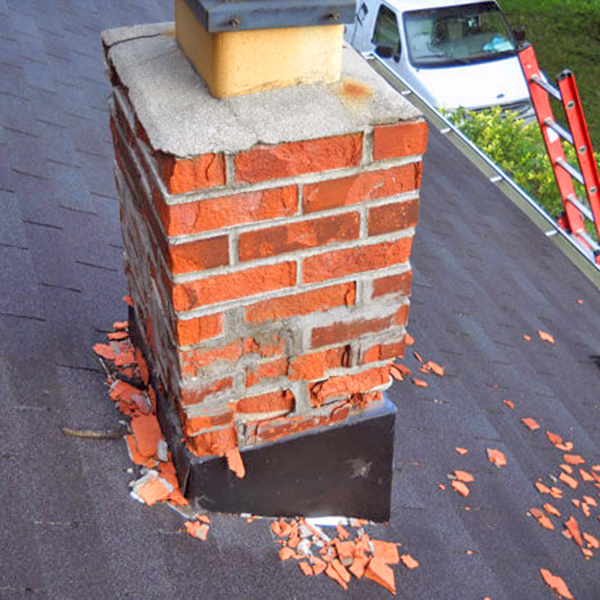Why is Crumbly Chimney Masonry a Common Dilemma?
 The sight of a brick chimney can stir up cozy winter memories of times spent around crackling fires, but you may not notice the chimney is crumbling. As sturdy as they appear, chimneys are highly susceptible to moisture damage. The way chimneys are built, every feature helps to prevent water from infiltrating the masonry system. But there’s a problem. Those features that provide protection are prone to deteriorate and fail to keep moisture out. The following information could help you detect chimney masonry deterioration before the damage becomes widespread, taking more time and money to fix.
The sight of a brick chimney can stir up cozy winter memories of times spent around crackling fires, but you may not notice the chimney is crumbling. As sturdy as they appear, chimneys are highly susceptible to moisture damage. The way chimneys are built, every feature helps to prevent water from infiltrating the masonry system. But there’s a problem. Those features that provide protection are prone to deteriorate and fail to keep moisture out. The following information could help you detect chimney masonry deterioration before the damage becomes widespread, taking more time and money to fix.
Mortar Joints
You can depend on the mortar joints between chimney bricks lasting only about 25 years at best, though masonry lasts 100 years or more. Once the mortar wears away, crumbles, and flakes off, the masonry is exposed to an increased possibility of moisture intrusion. The problem with moisture inside the mortar system is that it results in irreversible destruction of the bricks.
It is always good to spot deteriorating mortar at its early stages. If no water has gotten into the bricks, a procedure called tuckpointing can resolve the problem at a far more affordable cost than a partial or complete chimney rebuild. In the simplest of terms, with tuckpointing, old mortar is scraped away and replaced with new mortar. After the procedure is finished, the structural soundness and appearance of the chimney are renewed.
Spalling
If you notice broken pieces of masonry around or below the chimney, you are seeing “spalling,” which is the popping and flaking off of the brick face. The cause of the problem is that moisture has entered the masonry system. Next, during the winter, freezing and thawing temperatures caused moisture inside the bricks to expand and contract. The bricks break down due to the movement. Spalling is evidence that moisture is in the process of destroying bricks in the chimney.
Leaning or Cracks in the Chimney
If you see large cracks in your chimney, better called the chimney sweep experts you trust. The need for repair is urgent because not only is moisture getting in, but strong winds could contribute to the sudden destruction of the chimney. A leaning chimney is just as urgent because chimney stacks are extremely heavy. When moisture in the chimney has done its worst, a natural result is that the chimney will start leaning. Masonry repair is needed as soon as possible.
 Efflorescence
Efflorescence
White staining of the chimney is known as “efflorescence.” It is a sure sign that water has infiltrated the masonry and some or all of the bricks need to be removed and replaced. What causes efflorescence is the presence of salt and water inside the masonry. After the salt and water mix, the salt travels through the bricks to the outer surface and is deposited there. It is easy to remove the white stains but addressing the moisture problem may be a major undertaking.
Contact Guardian Chimney Sweeps Today!
If you have noticed that your chimney is crumbling or if you check for signs of damage and find that, sure enough, moisture has entered your chimney system, call Guardian Chimney Sweeps. All of our chimney technicians are CSIA-certified, and we can provide chimney services and masonry repairs you need. We are devoted to customer satisfaction. At one of the numbers below, give Guardian Chimney Sweeps a call today.
Toll-free: (888) 306-6069
Conroe: (936) 271-9781
Houston: (713) 401-2011

 Tap to Call Now
Tap to Call Now